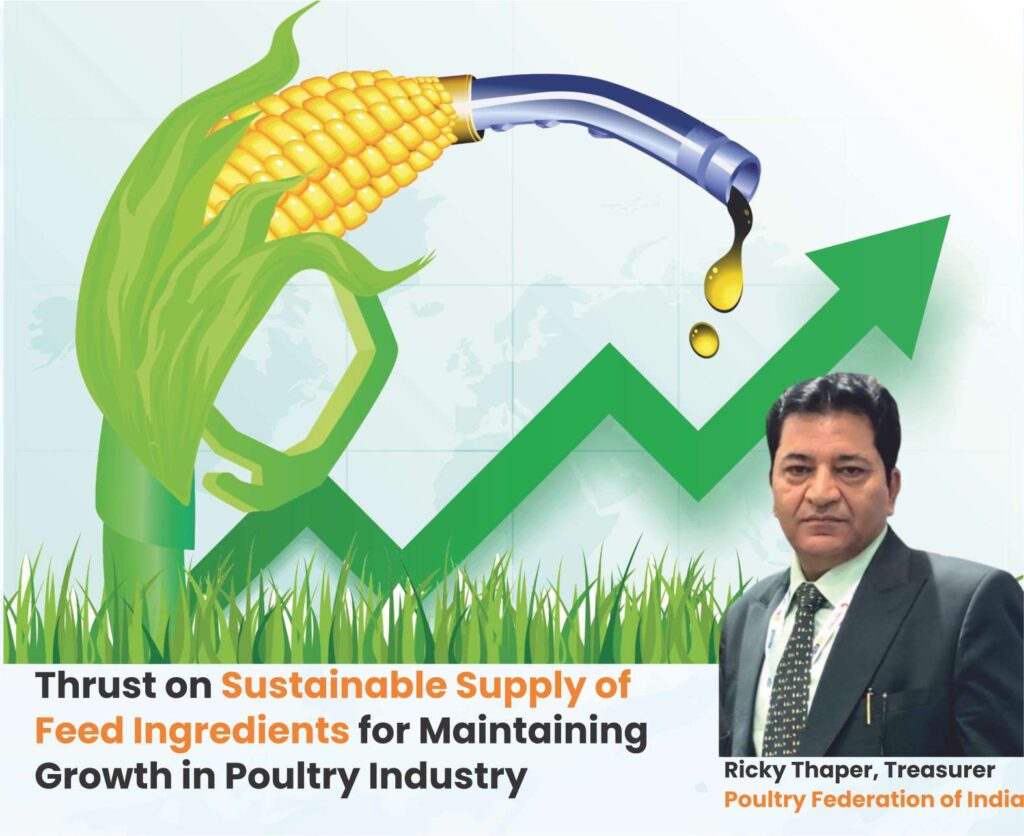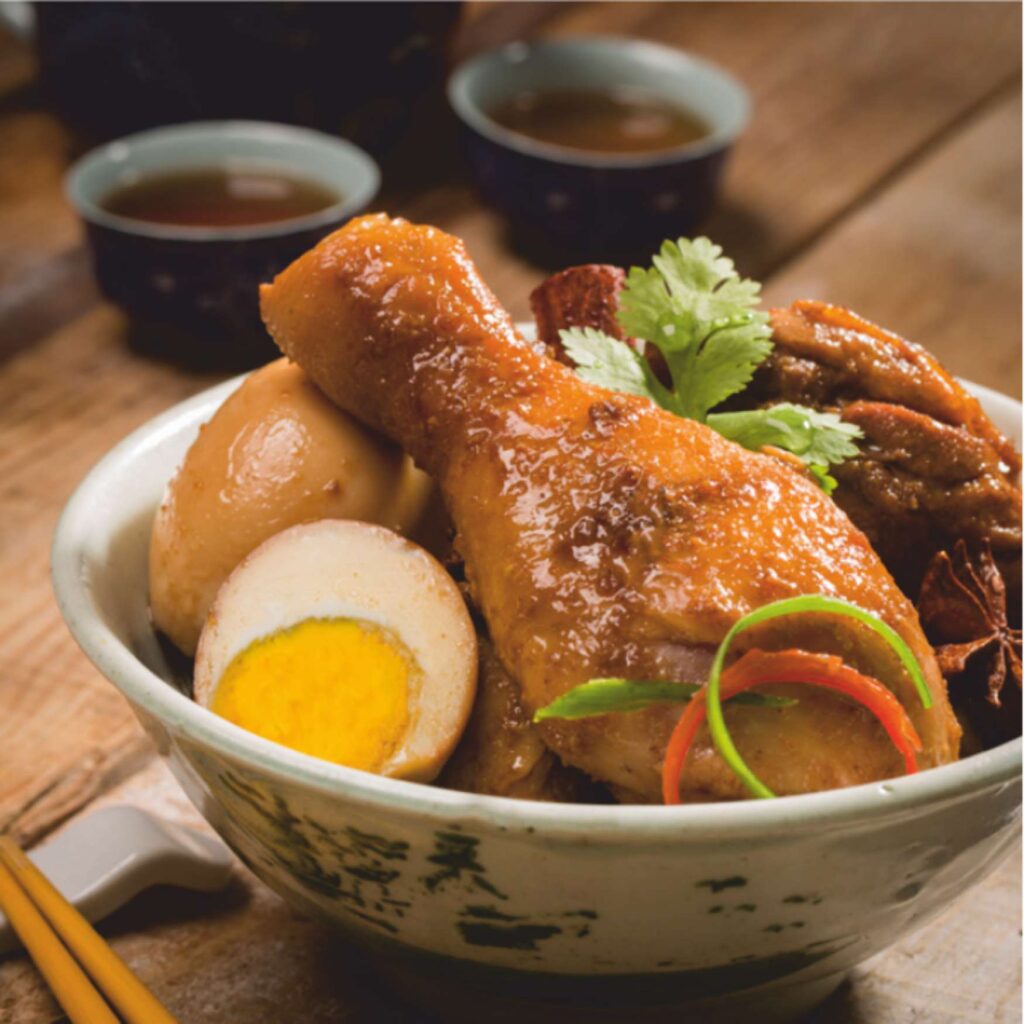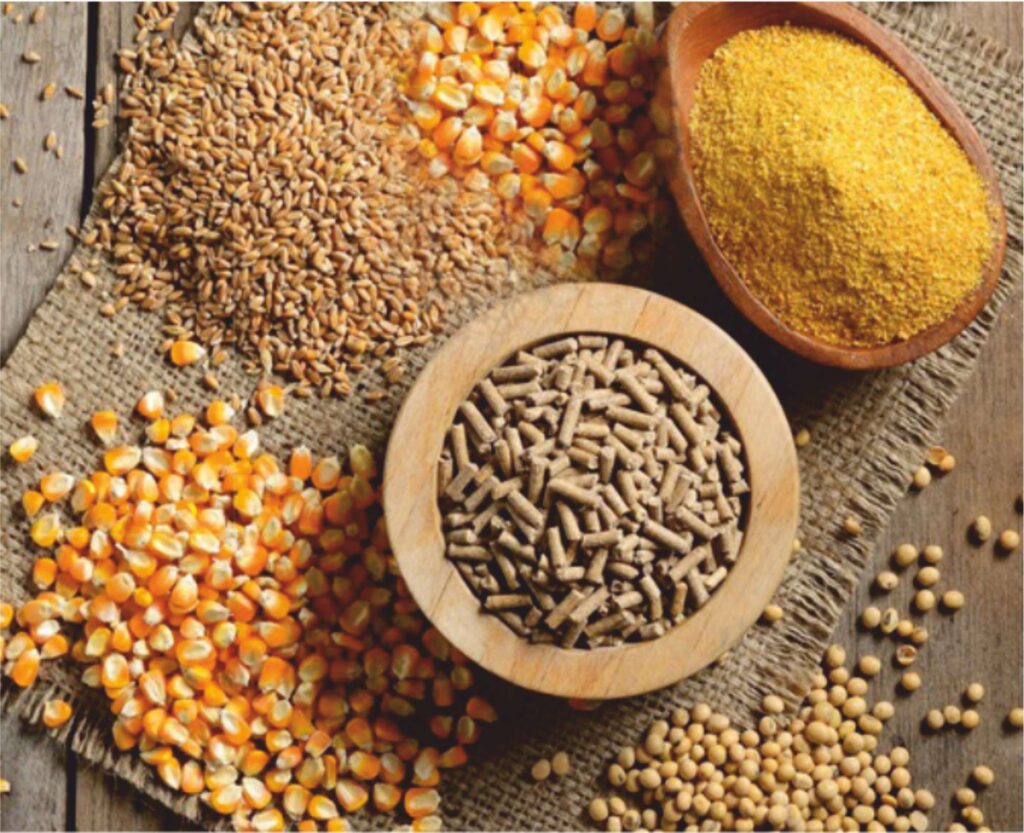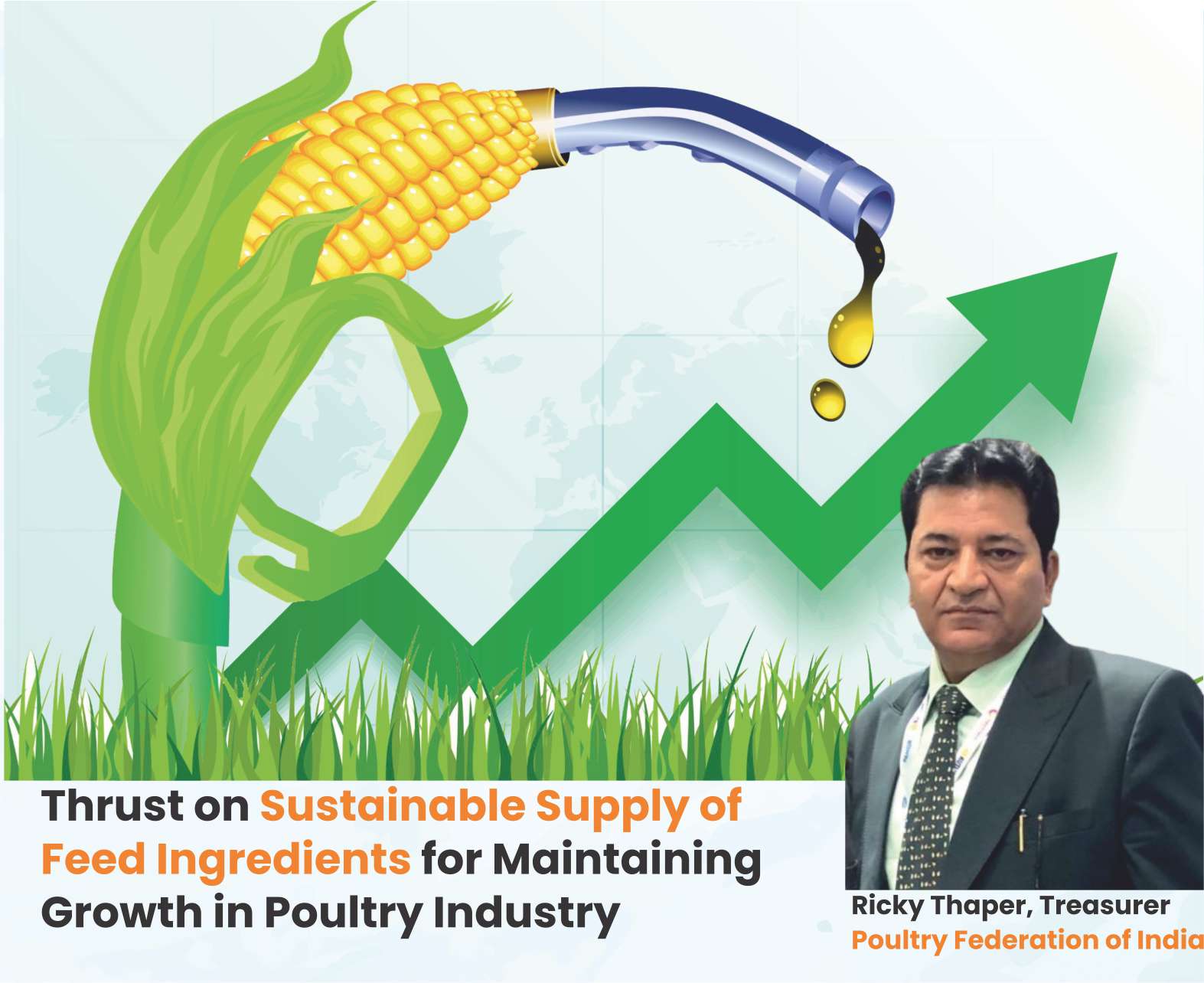Thrust on Sustainable Supply of Feed Ingredients for Maintaining Growth in Poultry Industry

To sustain growth in the poultry sector, the government must ensure supplies of feed ingredients at reasonable prices which should be ensured through liberalizing imports and augmenting production.
Livestock rearing is one of the most important economic activities in the rural areas contributing significantly to the economy. Livestock sector, although half the size of crops, plays a crucial role in driving the agricultural gross value added (GVA) growth. This sector is contributing to the economy in a big way considering the higher rate of growth of the sector in comparison to the agriculture sector.
Presently, the GVA of the livestock sector has recorded an annual growth rate of around 6% at constant prices. The growth of the sector is more than the crop sector growth rate which was 1.65% annually. Its contribution to the Indian agriculture and economy is increasing steadily with a share of 30.47% in agriculture and allied sector GVA and 4.75% in the country’s total GVA.
According to basic animal husbandry statistics, 2023, out of the total meat production of 9.77 million ton (MT) in 2022-23, the share of poultry meat was 4.99 MT, contributing 51% of total output. The growth of poultry meat production has increased by 4.52% over previous year. According to the Food and Agriculture Organisation, India ranks 8th in the world in terms of meat production. The poultry sector in India is valued at more than $28 billion in 2021-22, according to the Confederation of Indian Industry (CII)’s vision document – 2047 for Indian poultry sector released recently. Over the years, the poultry sector in the country has witnessed a remarkable growth, with chicken meat growing at an annual growth rate of 8% in the last 15 years – 2006-2021-22, the report stated.

With rising disposable income and population, the demand for poultry products including chicken meat and eggs has been on rise. The sector has capitalized on this opportunity and expanded its production capability to meet the growing consumer demand. This significant transformation in the poultry sector has been attributed to the commercial poultry industry which accounts for 85% of the total poultry production and 15% is contributed by backyard poultry. The sector has witnessed a shift from the traditional backyard poultry models to a model production technique including integrated farming systems, contracting farming and value chain integration.
As the share of meat and egg eating population has increased by 6% during 2015 – 2021, the national family health survey -V, 2021, the demand for poultry and products is set to increase further. Currently, the per capita consumption of poultry products in the country (94 eggs per annum and chicken meat consumption is 4.2 kg per annum) is very low as compared to the Indian Council for Media Research (ICMR) recommended consumption level of 180 eggs and 10.8/kg poultry meat per person per annum. There is a need to bridge the gap between availability and requirements couples with large scale awareness campaigns.
For enhancing efficiency of the poultry sector, several measures are being undertaken to improve genetics and disease resistance breeds of poultry, disease prevention and surveillance, and supply of affordable feed which constitute 65% to 70% of the cost of production of meat remain a challenge. While stating that the domestic poultry industry is likely to grow at a steady pace of 8%-10% in 2023-24, consulting firm ICRA in March this year had stated that earnings of poultry companies are expected to be volatile owing to fluctuations in the raw material or feed costs, especially maize. ICRA has stated that due to rising worldwide demand for Indian maize as a result of the Russia-Ukraine conflict and increased exports from India, maize prices have grown significantly by 32% on a year-on-year (YoY) basis in 2022-23, resulting in increase in average feed price.

Poultry feed mostly consists of maize, Bajra and broken rice (60-65%), soybean meal (30-35%) and nutrients. The mandi prices of maize because of rising demand for industrial use is ruling much above the minimum support price (MSP) of Rs.1962/quintal announced by the government for 2022-23 and Rs.2090/quintal for 2023-24 kharif season. Stating that there has been increasing diversion of maize towards industrial use and ethanol production, “the current growth level of maize and soybean production in the country will be insufficient to meet the demand of the poultry industry.” As the government plans to promote use of maize for ethanol, the poultry industry can face challenges in getting maize for feed.
Several poultry and livestock industry associations including All India Poultry Breeders Association, The Compound Livestock Feed Manufacturers Association, Poultry Federation of India, Vets in Poultry, are now Pitching for the government to allow imports of GM maize and soybean because of ‘unprecedented increase’ in prices. Regional Poultry Associations have also urged the central government for reduction in import duty on maize and soybean to deal with feed supplies. The industry feared that the prices of maize would spike in the coming months as the diversion of these raw materials for ethanol production is expected to increase as the government has reduced allocation of sugarcane for biofuel production.
In August 2021, the government had relaxed import rules to allow the first shipment of 1.2 MT of genetically modified (GM) soymeal to support the domestic poultry industry after a record spike in feed prices. Poultry industry has requested that the Government should allow both import and cultivation of GM Soybeans and Maize to fulfill the requirement of these two major feed ingredients. The sustainable supplies of feed ingredients in coming years would be crucial for the growth of the poultry industry.






